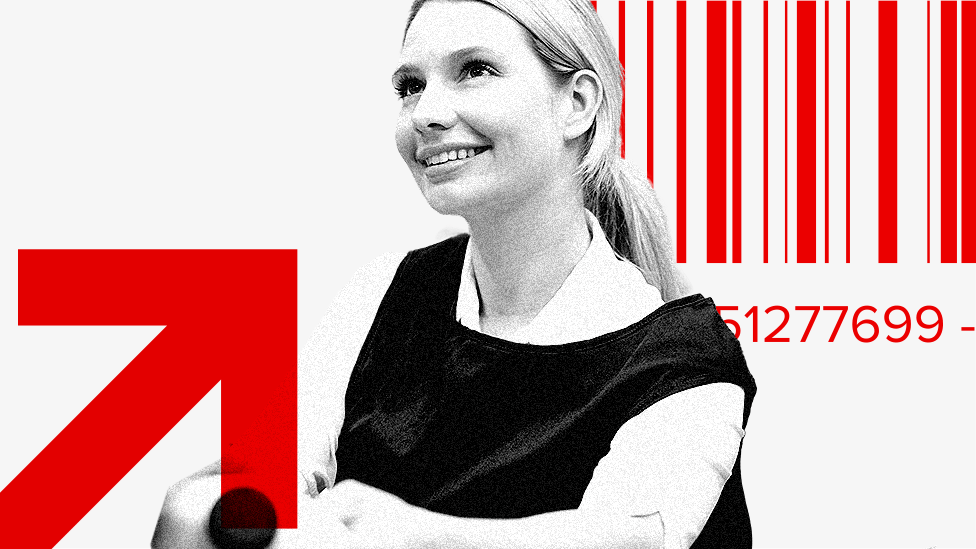 Image source, Getty Images/BBC
Image source, Getty Images/BBC
The wages of three and a half million low-paid workers will increase by more than expected in April 2025.
The government has confirmed the National Living Wage paid to over-21s will go up by 6.7% while the National Minimum Wage for 18 to 20-year-olds will see a 16% increase.
Separately, almost half a million workers benefit from a higher hourly rate paid voluntarily by some UK businesses called the Real Living Wage, which is also going up.
What is the National Living Wage and how much is it?
Since 1 April, employees aged 21 and over have been entitled to the National Living Wage. Previously, you had to be 23 to qualify.
It is currently worth £11.44 an hour, but will increase to £12.21 in April 2025.
The pay rates are set by the government every year on the advice of an independent group, the Low Pay Commission, external.
It had recommended that the National Living Wage should be £12.10 in April 2025, a 5.8% rise, external.
However, the government has announced that the rate will increase by 6.7%.
What is the National Minimum Wage and how much is it?
Younger employees - aged between 16 and 20, external - receive the National Minimum Wage.
For 18, 19 and 20-year-olds, the National Minimum Wage is £8.60, but will rise to £10 an hour in April 2025.
That is the largest rise on record, and is the first step towards meeting the government's target of having a single adult rate.
For 16 and 17-year-olds, the National Minimum Wage is £6.40 an hour. The government has not yet confirmed what this rate will be in April 2025.
The separate apprentice rate,, external which applies to eligible people under 19 - or those over 19 in the first year of an apprenticeship will rise from £6.40 to £7.55, an 18% increase.
Who can't get the National Minimum Wage or National Living Wage?
Those who don't qualify include:
self-employed
company directors
volunteers
members of the armed forces
people living and working in a religious community
prisoners
People with disabilities or in long-term unemployment who take part in government work programmes are paid fixed amounts at different stages of the scheme.
These are less than the equivalent National Minimum or Living rate.
Do employers have to pay the National Minimum Wage and National Living Wage?
Yes, it is a criminal offence if employers fail to pay the correct National Minimum and Living Wages to their workers.
The rates apply to staff even if they are not paid by the hour.
If you think you are being paid incorrectly, you can complain via the HMRC website, external.
You can also get advice from workplace experts Acas, external.
What happens if employers don't pay the right National Minimum Wage or National Living Wage?
Any employer not paying the correct amount can be fined by HMRC.
In June 2023, the previous government said that more than 200 firms had been fined a total of nearly £7m and told to reimburse 63,000 workers for failures over several years.
The companies included Marks and Spencer, Argos and Lloyds Pharmacy.
WH Smith was the worst offender, having failed to pay more than £1m to more than 17,600 workers.
What is the Real Living Wage and how much is it?
The Real Living Wage, external is an unofficial hourly rate of pay which is overseen by the Living Wage Foundation charity.
The rate is independently calculated by the Resolution Foundation think tank, external, and is overseen by the Living Wage Commission, external.
It is aimed at UK workers aged 18 and over, but is not a legal requirement, and businesses choose whether to pay it.
The charity says more than 475,000 employees working for 15,000 firms, external receive the Real Living Wage.
The rate for workers in London - the London Living Wage - is going up by 70p to £13.85 an hour.
In the rest of the UK, a 60p increase will take the rate to £12.60.
Employers must implement the new rates by 1 May 2025.
Image source, Getty Images
Announcing the new rates, the charity said the Real Living Wage was now worth over £2,262 more per year in the UK than the legal minimum pay - and over £4,700 more in London.
It says the scheme has delivered nearly £3.5bn in extra wages to low-paid workers since 2011.
When were the National Minimum Wage and National Living Wage introduced?
The National Minimum Wage came into force under the Labour government in 1999.
It started at £3.60 an hour for those 22 and older, and £3 for those aged 18 to 21.
A new minimum wage rate for 16 to 17-year-olds was introduced in October 2004, and the apprentice rate began in October 2010.
The National Living Wage for workers aged over 25 started in 2016.
It was initially set at £7.20 an hour - 50p more than the National Minimum Wage. The qualifying age fell to 23 in 2021.

 By BBC (Business) | Created at 2024-10-29 18:32:12 | Updated at 2024-11-05 21:19:21
1 week ago
By BBC (Business) | Created at 2024-10-29 18:32:12 | Updated at 2024-11-05 21:19:21
1 week ago








